Alpine Climbing: The First Summit
For six precious summer days, I camped on Mt Baker for a mountaineering course that ended with a very successful summit. After living in Washington state for 2 years and doing the more strenuous day hikes, this summer seemed like the perfect time to start learning more technical skills in order to do more difficult approaches.
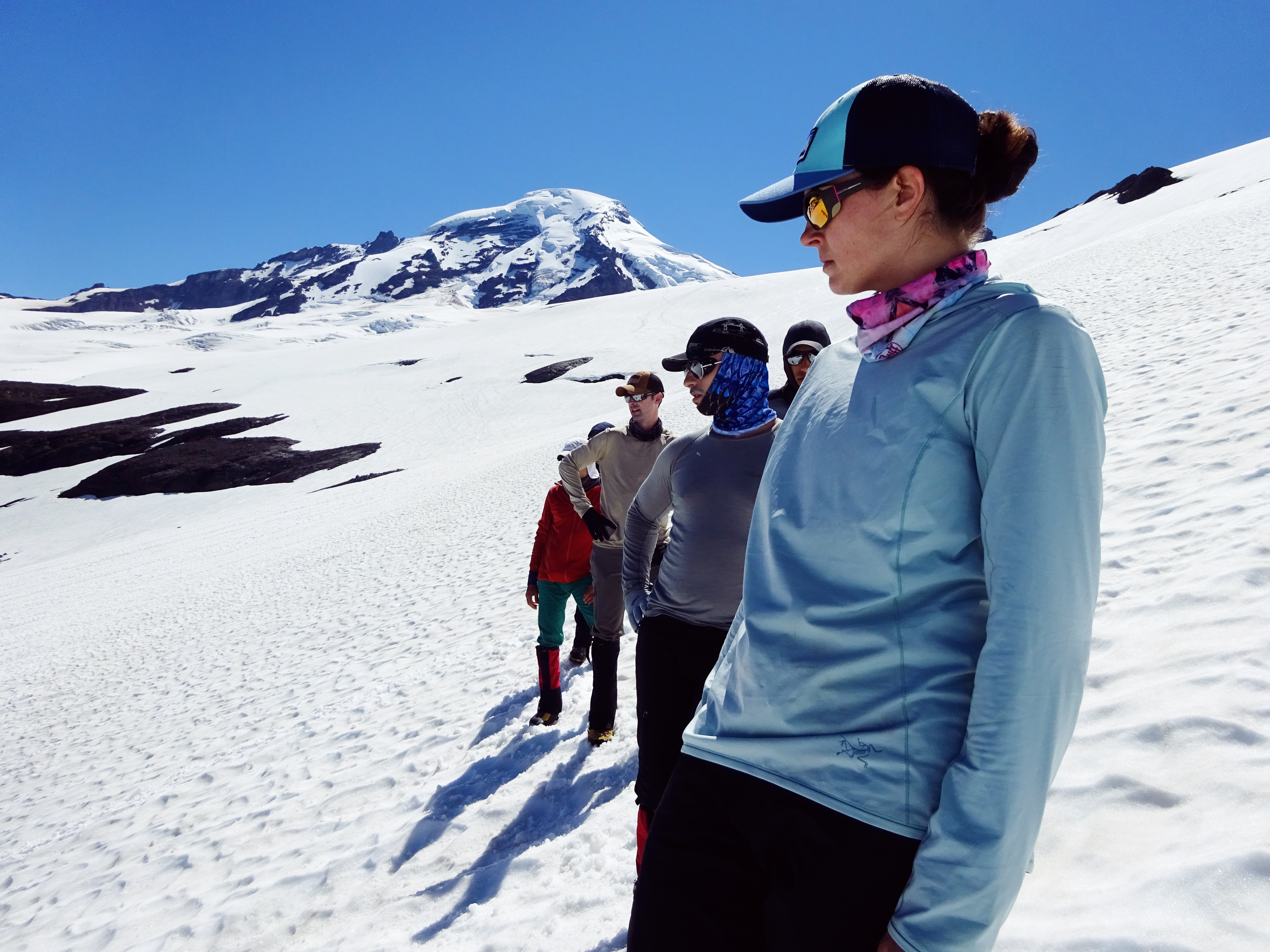
Mountains Are Calling
When I first moved to Seattle, I had no idea the city was surrounded by some of the best mountains and mountain ranges. I was first surprised with my first night in my new apartment in downtown, where I stood in awe on my balcony as I saw the sunset over the Olympic mountains in the distance. And that’s just the view of my apartment. Anywhere you go in Seattle there is some mountain
Within my first year, I was starting to do day hikes every weekend. A friend was training for Rainier, and it seemed like the perfect excuse to get out of the city. And she wasn’t the only one on the trails training for Rainier, we were often met with plenty of other folks carrying way too large and heavy of packs for only a day hike.
Summiting the local mountains like Rainier, Baker, St Helens, Hood, etc all seem like a right of passage for becoming a true Washingtonian. So I put down my growler and started training.
Day One: Base Camp
In January I had taken a few weeks off before starting a new job. I had just gotten my last check from the previous job, that included all my vacation cashed out. I did the only sensible thing and immediately started looking at ways to spend it. I booked a mountaineering course and immediately started climbing stairs and hitting the trails (Kind of, I twisted my foot on a hooverboard mid-january and had to delay serious training until March. But we don't talk about that).
When the week of finally approached I was having all the feelings of nervousness mixed with doubts on the amount of training I did. But after reviewing the itinerary, description and training, I knew I did everything I could (and more!) to prepare for this.
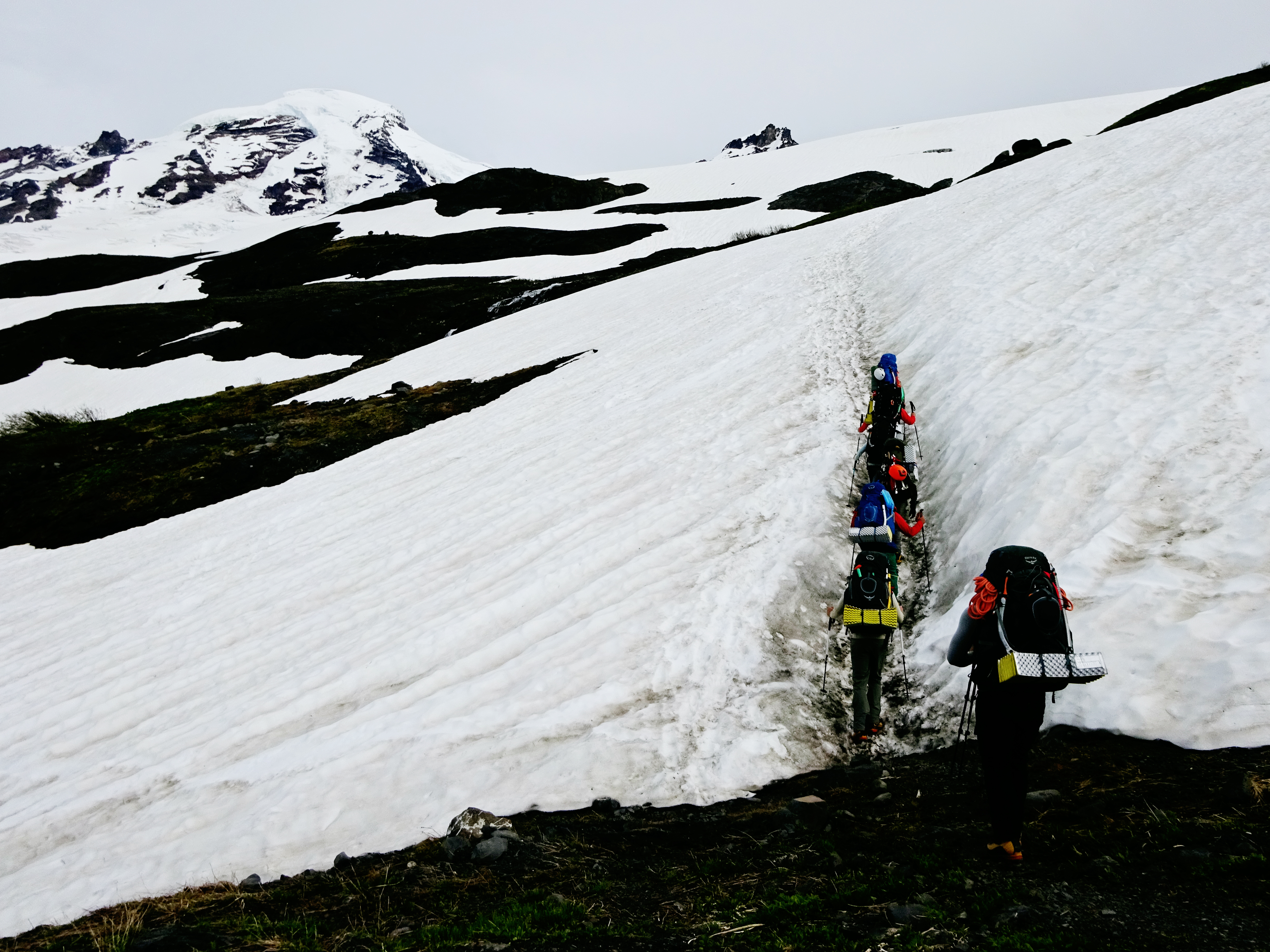
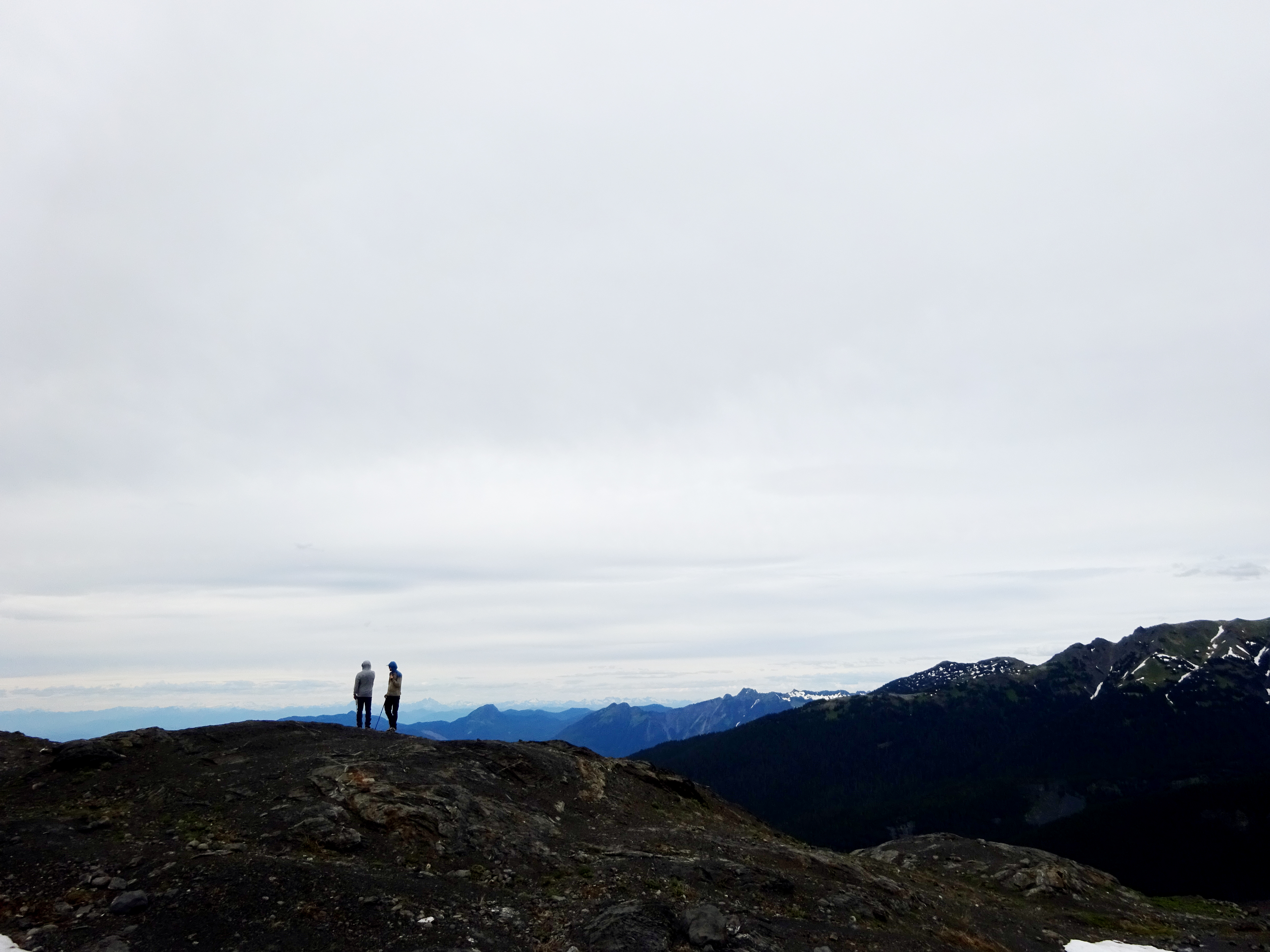
July 4th was the big day. Instead of spending the day drinking and eating a copious amount while waiting to watch fireworks, I woke up at 4:30AM. I packed all my gear, clothes, food, and supplies for 6-days as tightly as I could into my 85 liter pack. And at 5:15AM I was set to catch my Lyft to the office for gear check.
For having bought all my own gear (which I'm very glad to be done with), I did pretty well with only having forgotten my locking caribeneers. Fortunately there were plenty of climbers on the trip to lend me the two I needed. After having unpacked for the check, we repacked and loaded the van for the 3 hr drive up to the Heliotrope trailhead on Mt. Baker.
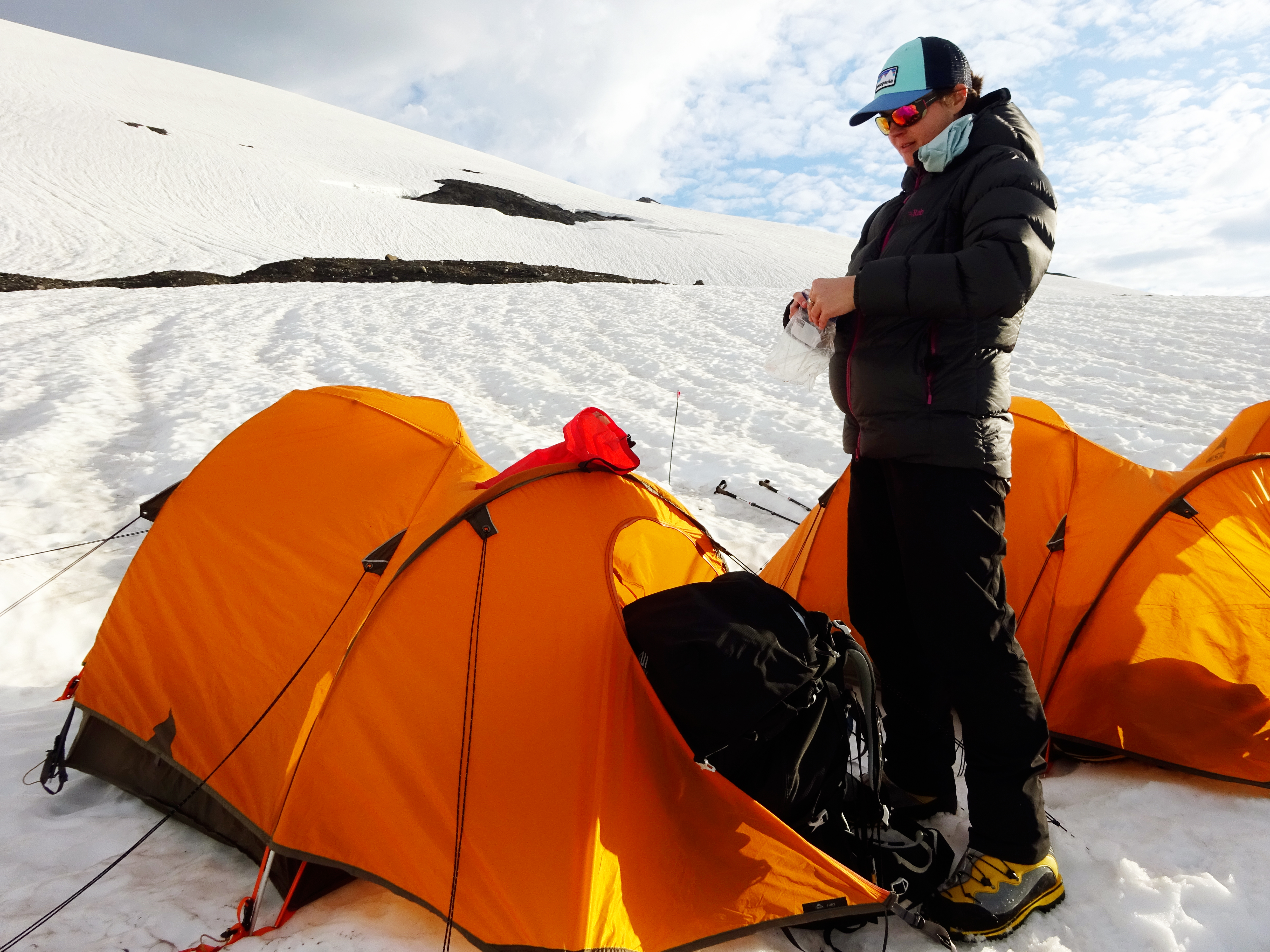
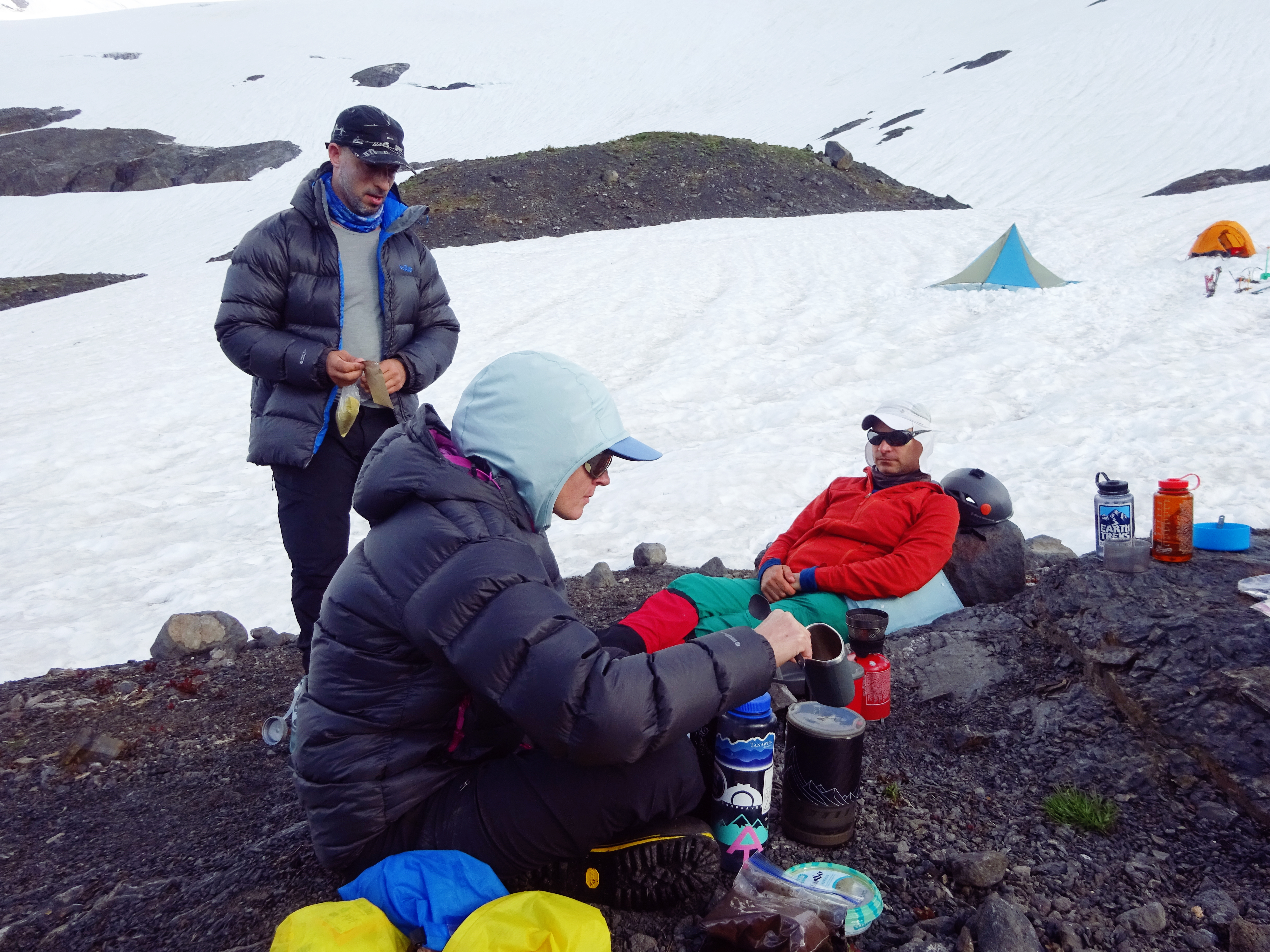
Within three hours we hit the snowfield and started scouting out a spot to setup camp. We shoveled and stomped out a platform, setup our tents and made our first meals.
Day Two: Knots and Snow School
The first night I got just as much sleep as you'd expect. If you expected basically none, then you are correct. Fortunately day two was relatively laid back with learning about knots, rope handing and practicing moving in up a steep snowfield as a rope team.
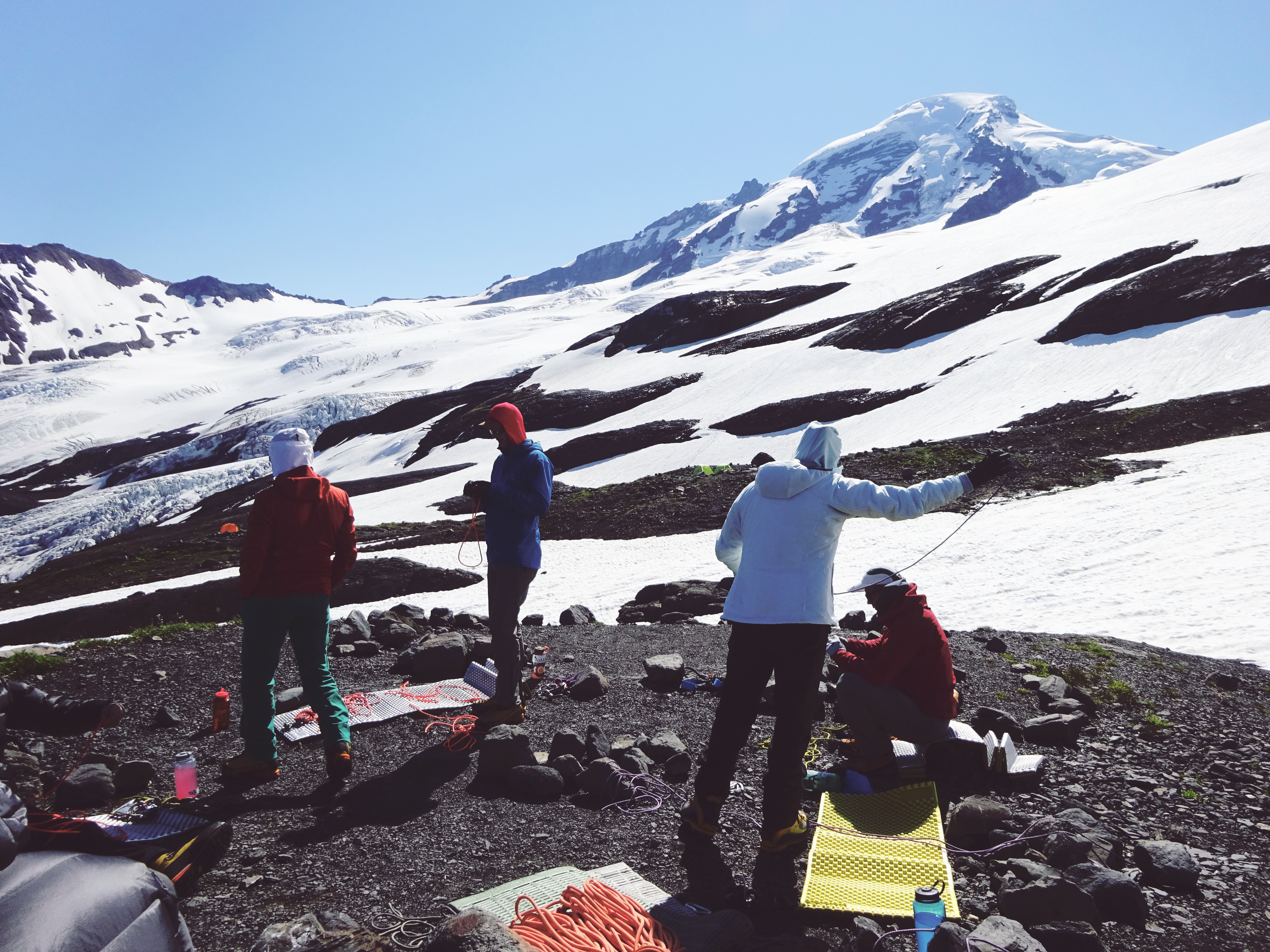
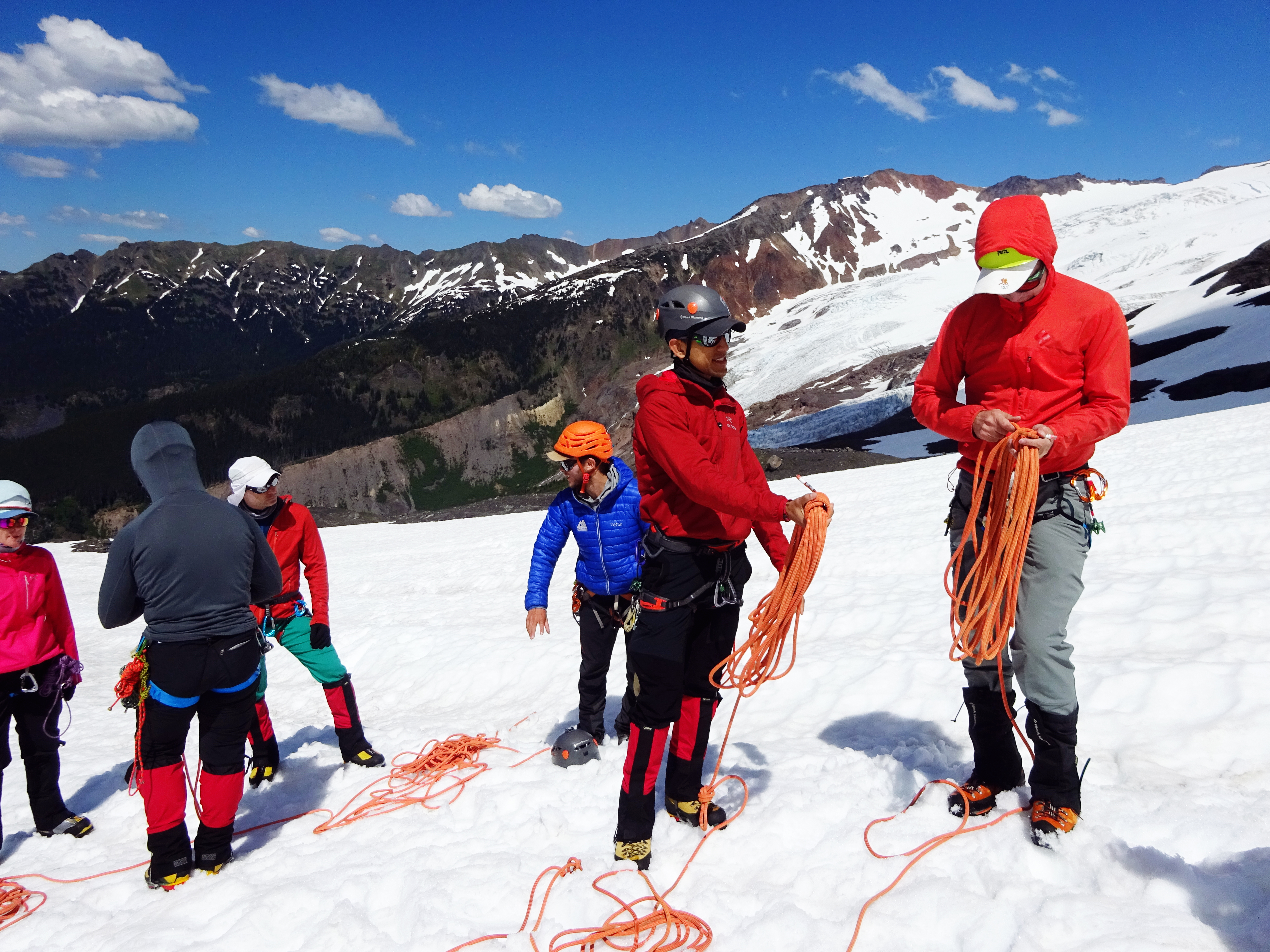
Cliff notes: There are lots of useful knots. The alpine butterfly should actually be called an octopus knot, because it looks way more like a drunken octopus than a butterfly. Lead ropes are heavy, but like could totally save your life, so I guess they're worth it. Prussicks are the most simple, cheap part of alpine climbing, but yet insanely useful. Don't be a jerk who's pulling on the rope. Turns out, rock climbers have a huge advantage with this part of alpine climbing, who'd of thunk. Lastly, Imma going to be practicing these a lot more.
After knot tying, rope handling and stomping around a bit in the snow, we practiced arresting. This is the most basic and essential part of mountaineering that even people who do guided climbs are taught. Basically, the whole point of a rope team is to catch and rescue someone if they fall. That fall could be down a steep, slippery part of the mountain or it could be a crevasse. Either way, falling sucks. Don't do it. But like, know what to do if it happens.
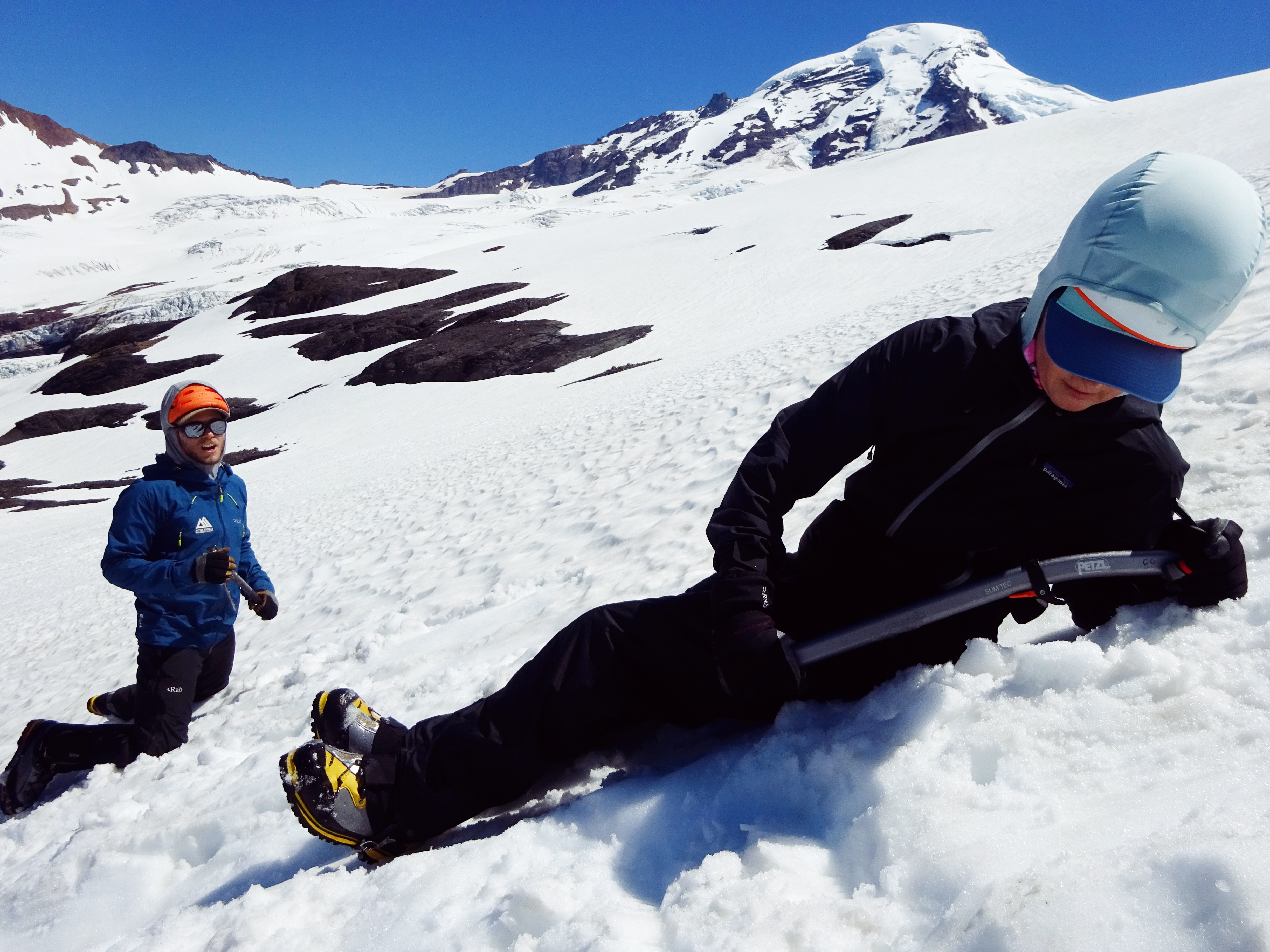
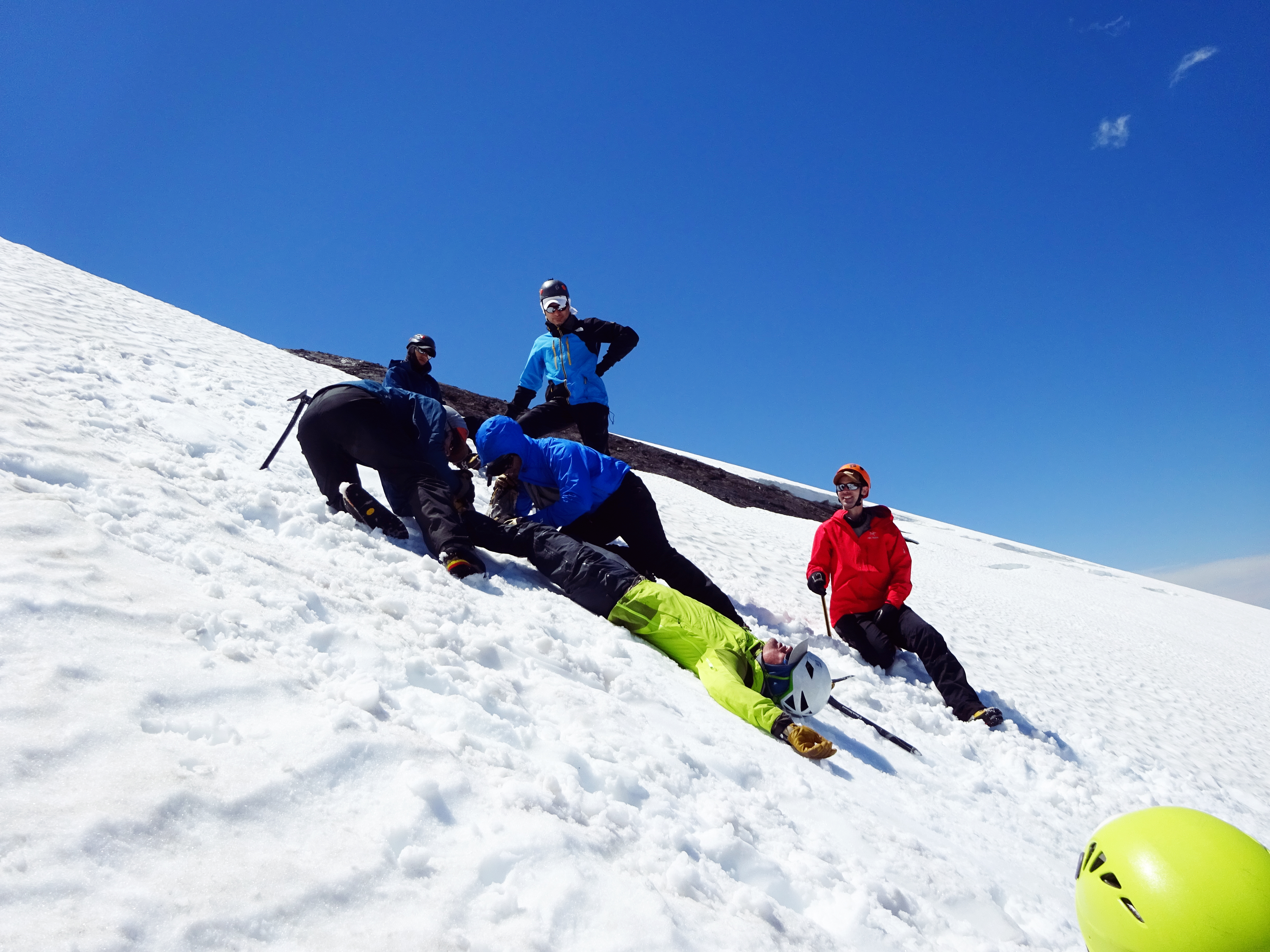
Arresting is really the simple most thing you have to do to stop a fall. Wether that's for yourself or a clumsy rope-mate. You fall, you stop yourself with an ice axe in a way that isn't going to pierce an organ, then you kick furiously until you can put your weight on the steps you kicked in. Done.
While there was a lot of content this day, it was all building up to crevasse rescues, which we covered on day four. But(!), day three held much more exciting plans before getting to that!
Day Three: Ice Climbing
Here it is folks, other than summit day, this was the most exciting. There is something about climbing up ice on relatively short ends of sharp objects that really is next-level badassery.
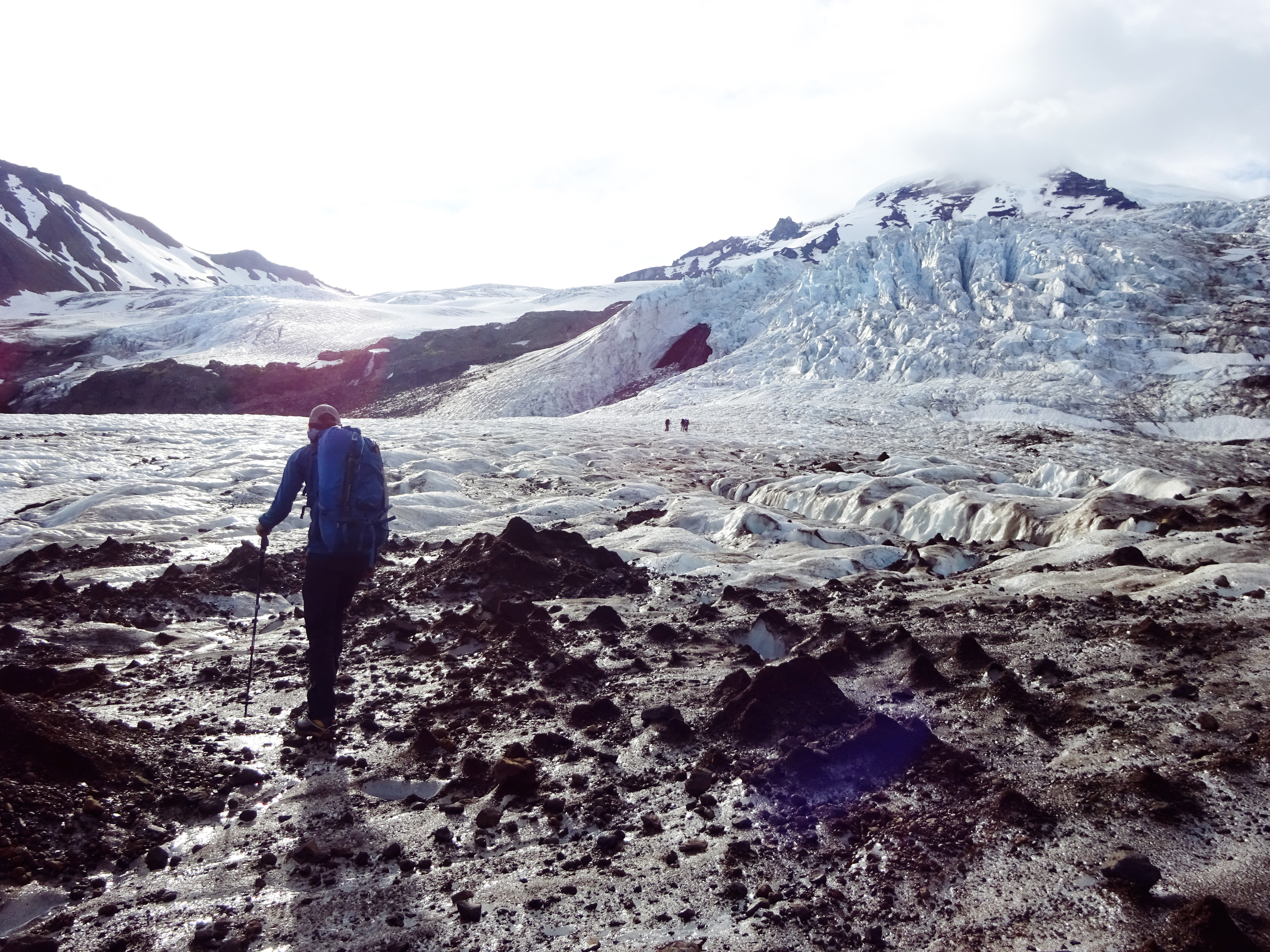
We hiked over to the Coleman Glacier and set ourselves up with our harnesses, crampons ice tools aaaand that's about it. The guides setup the top ropes so we could practice both climbing and belaying. Turns out belaying was more exhausting than the actual climbing. Out of the six days, I think I was the most sore from that.
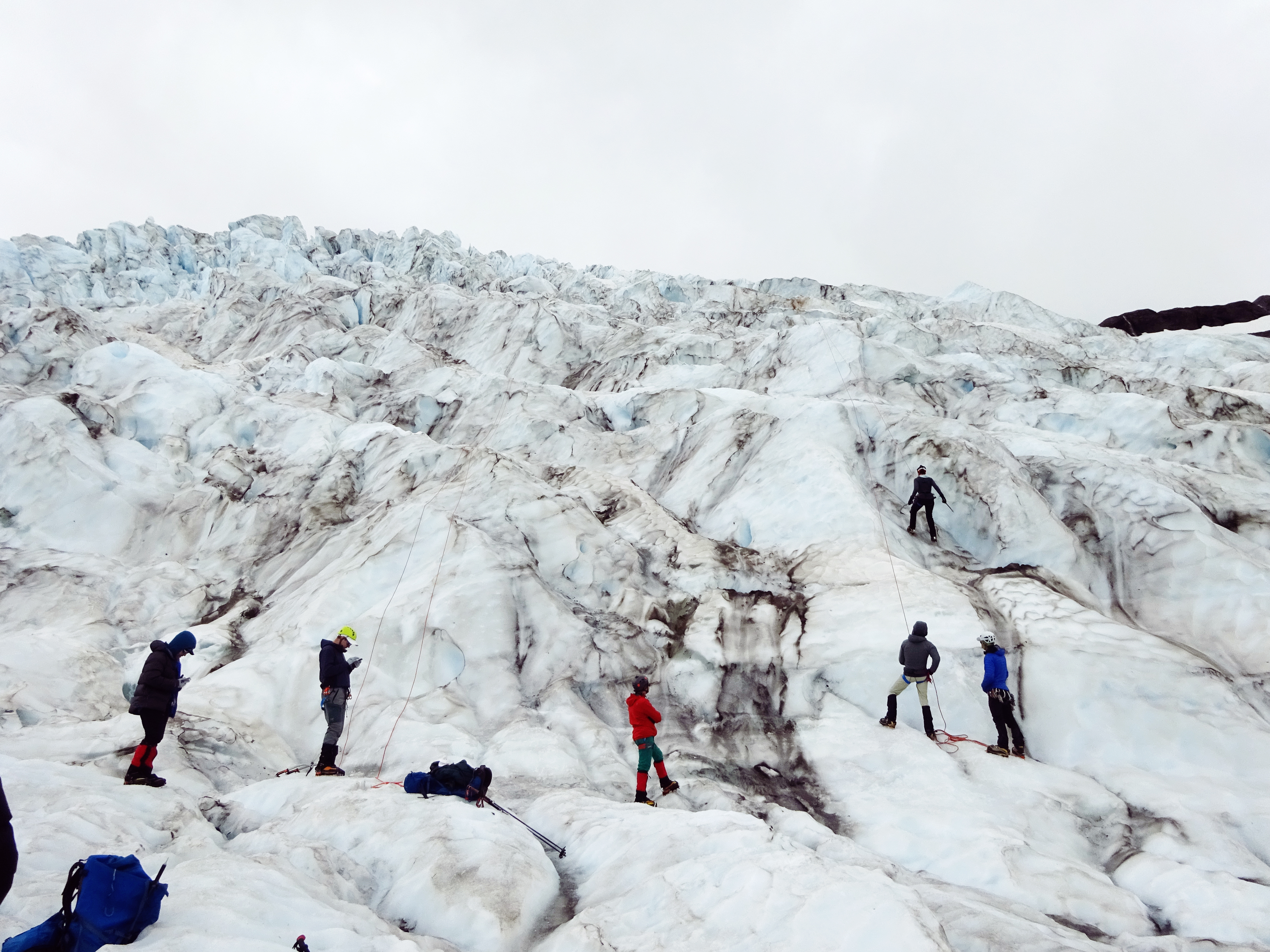
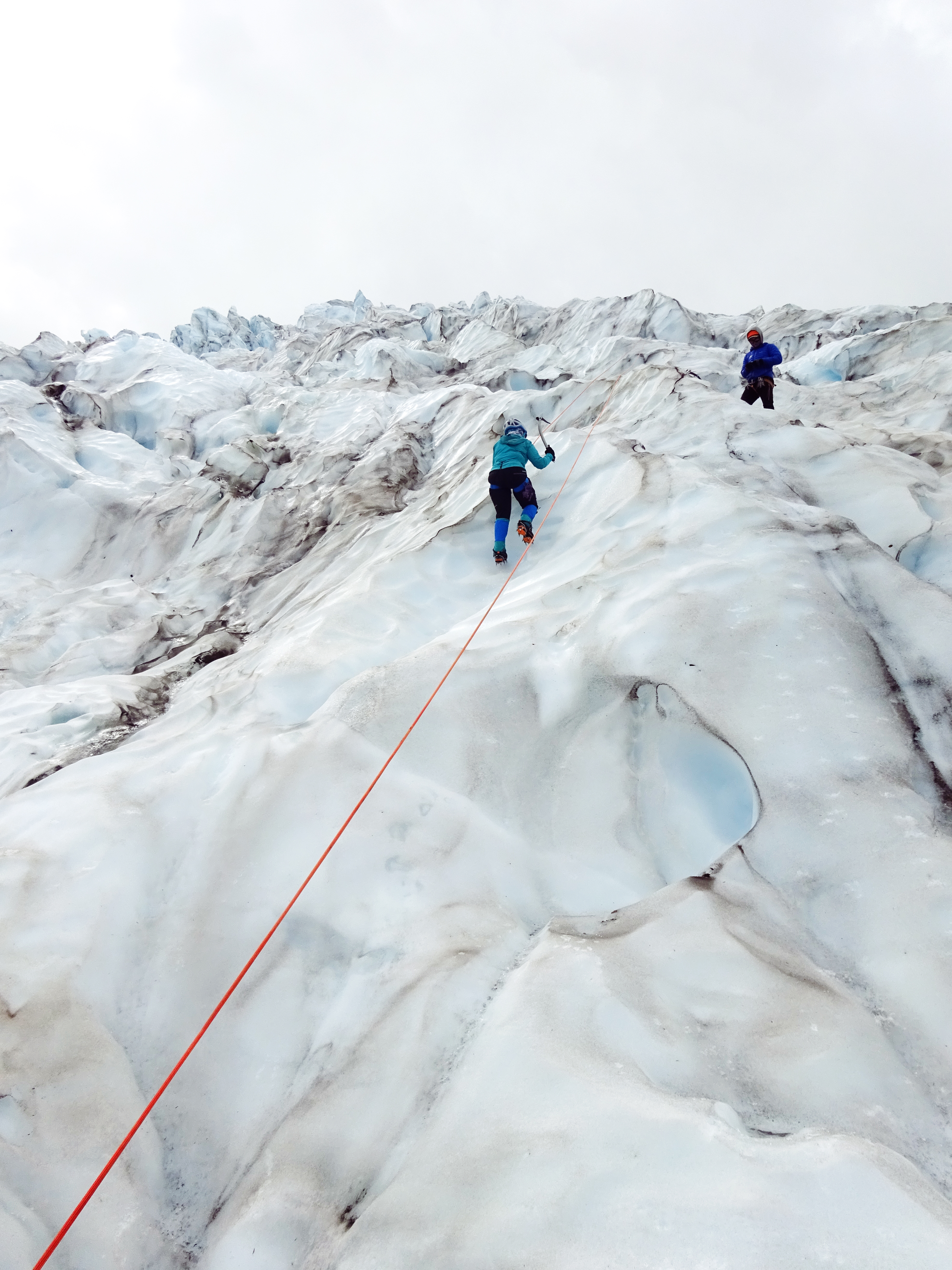
Climbing turned out to not be all that difficult to get started with. I kinda loved it! Rappelling down was actually more scary than going up. For me at least, as a non climber. While I don't care for rock climbing, I kinda want to pick it up just to get use to the height, rappelling and belaying.
Day Four: Crevasse Rescue
Between the climbing and hiking to the glacier, day three ended up being pretty phyically demanding. Which meant day four was a little more relaxed in that sense. However, it was more demanding content-wise with trying to cover all the bases of crevasse rescue.
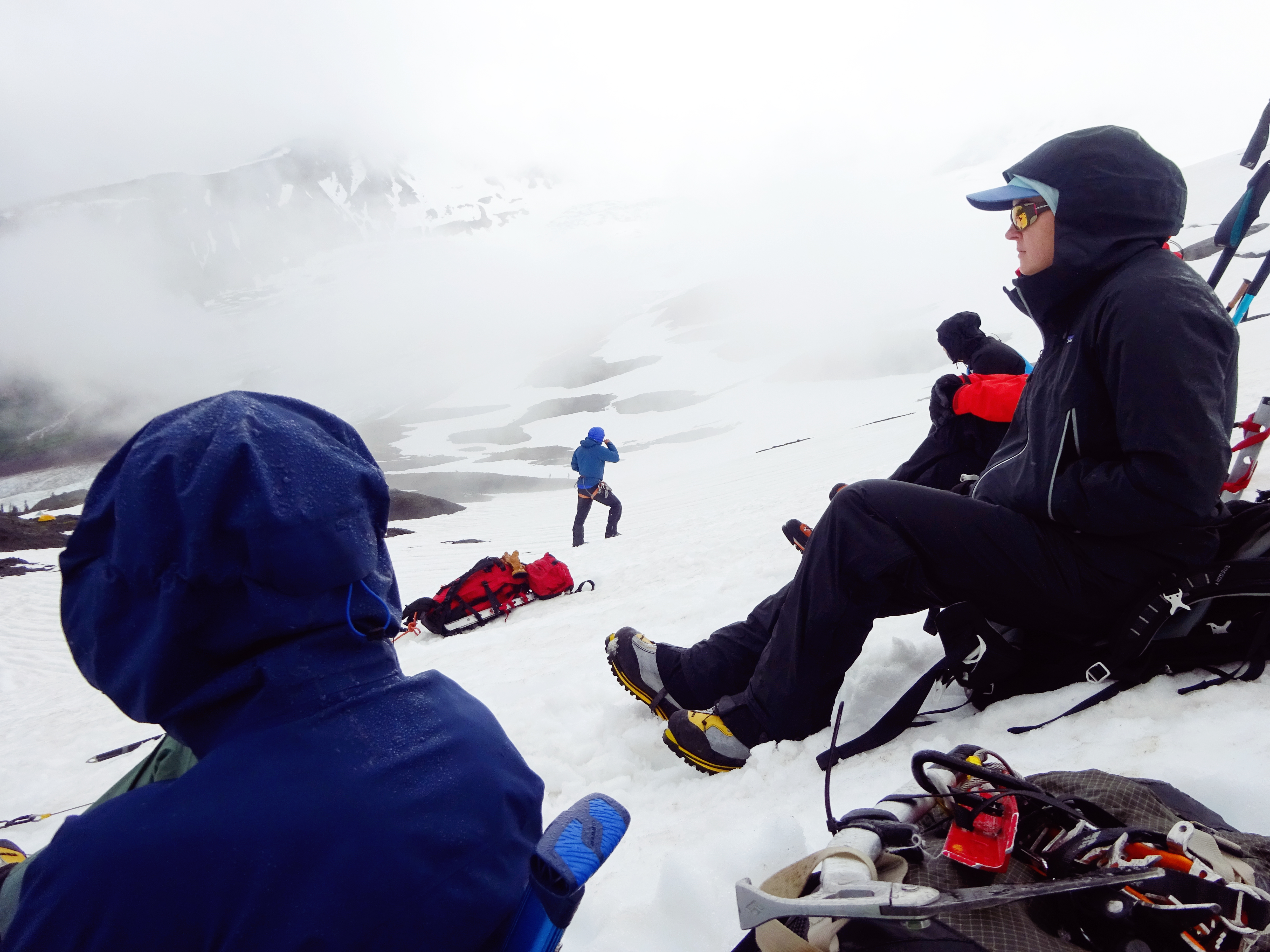
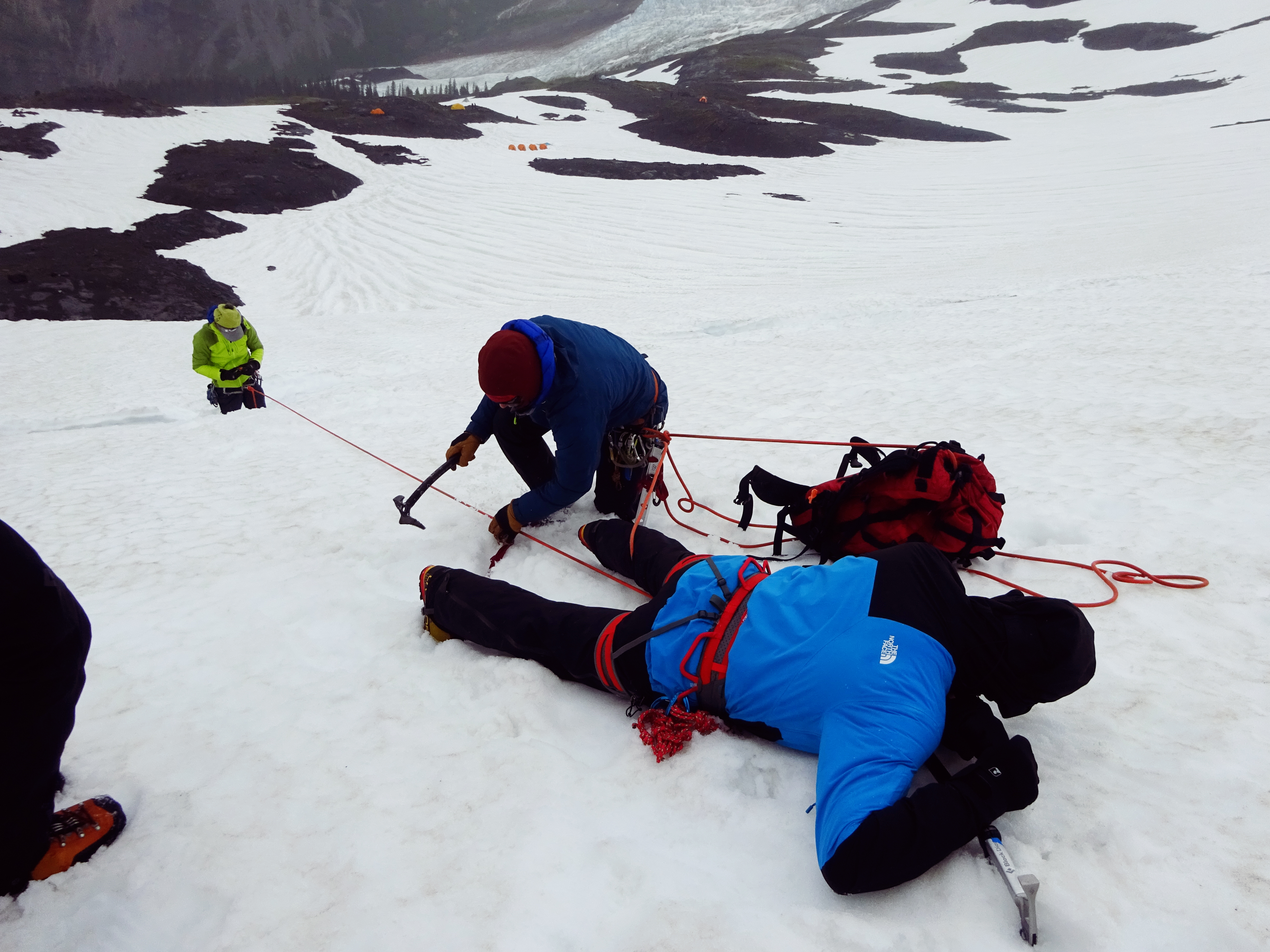
There were some baby crevasses not too far from camp that we hiked up to and spent most of the day at. The first couple of hours was sitting and watching a demo on setting up the anchors and rope system to rescue someone from a crevasse. Which is hella complicated.
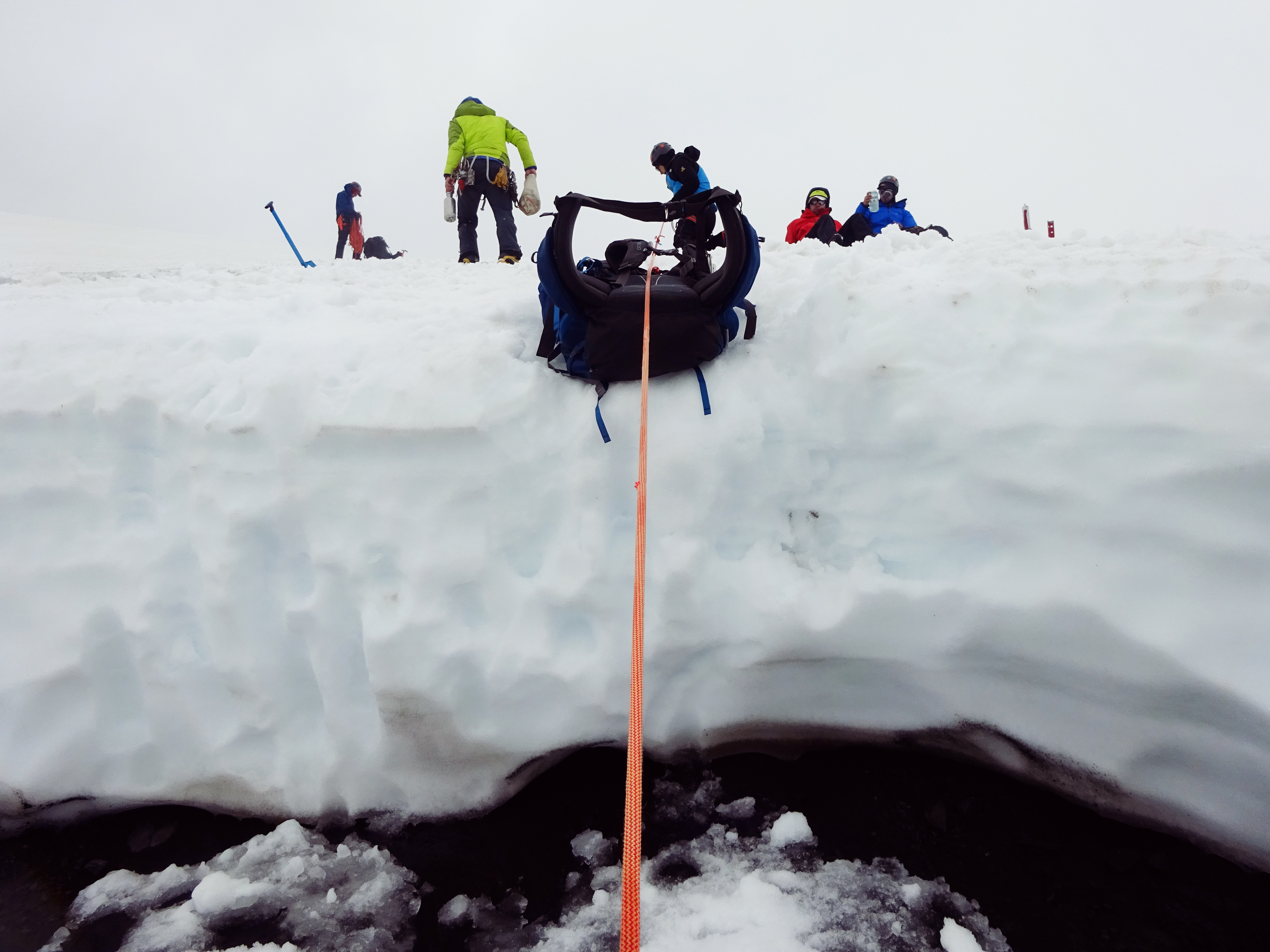
After getting to see the demo all of one time, we got to practice it once. Which basically meant, for most of us, having one of the guides walk us through most of it. Do I feel confident leading a rescue after doing the setup once. Nope. Not at all.
Each person had to go through each of the three roles - the person "falling" into the crevasse, the person arresting the fall and the lead, who has the responsibility of setting up the anchor and rope system. Each round of rescues took roughly 45 minutes minimum, meaning it was a long day of rescuing with a small fraction of the most important parts actually being retainable. Can you tell I wasn't the most impressed with this day?
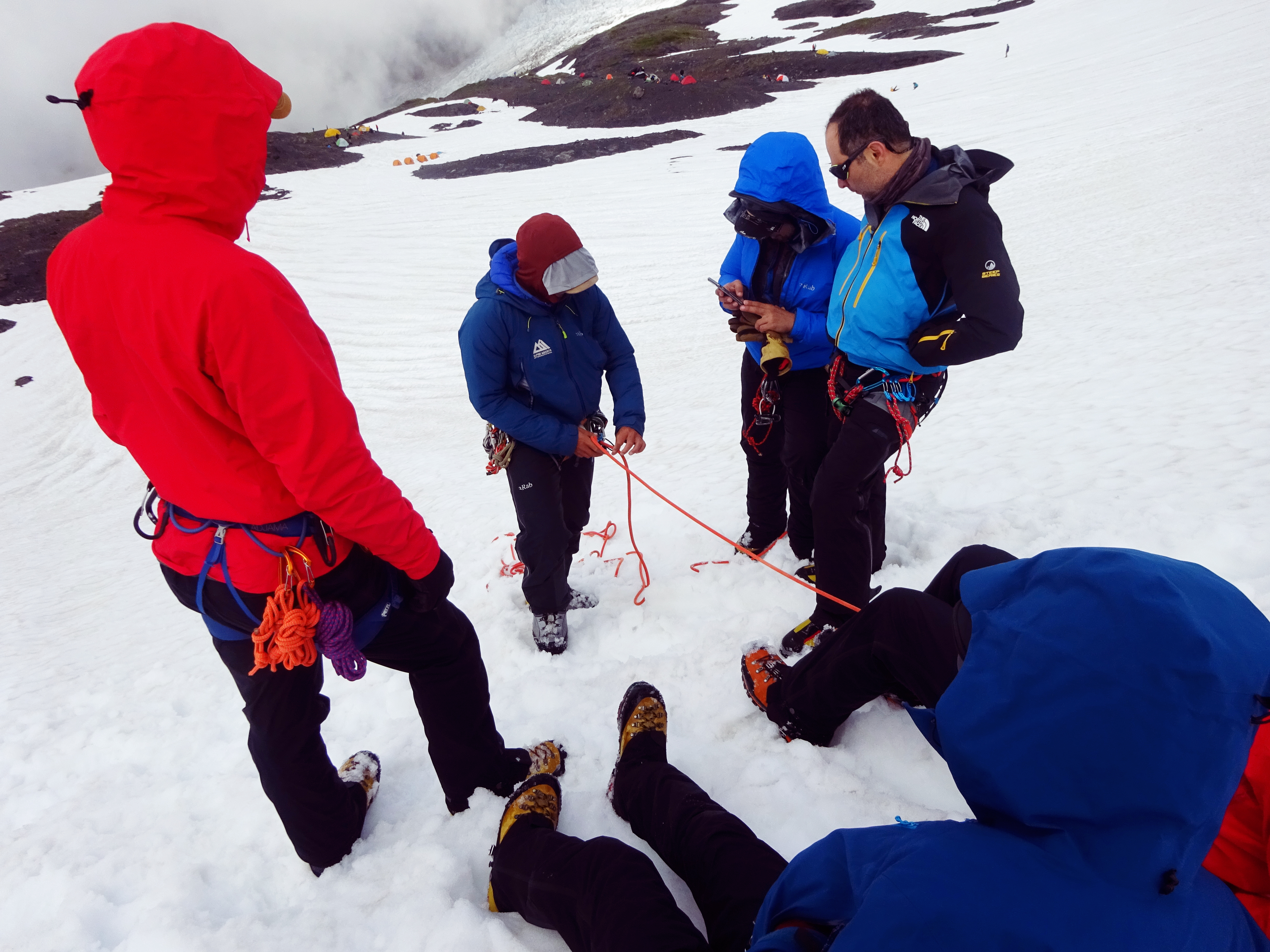
After rescuing, we did some more half-assed learning of self-rescue ascending with the use of those nifty prussicks we made on day two. And that's about it. Cool stuff, important stuff but a lot of content with little practice. So uh, anyone want to head to park/snowfield and practice setting up rope system?
Day Five: Summit Bid
The. Big. Day. It finally arrived, we were climbing the rest of the mountain that lured over us everyday while we sat and ate our meals at camp. The morning of we woke up around 4-4:30AM to be ready to start climbing at 5. As we made our way out of the tents we were greeted with the most gorgeous, clear sunrise where the crescent moon hung over summit.
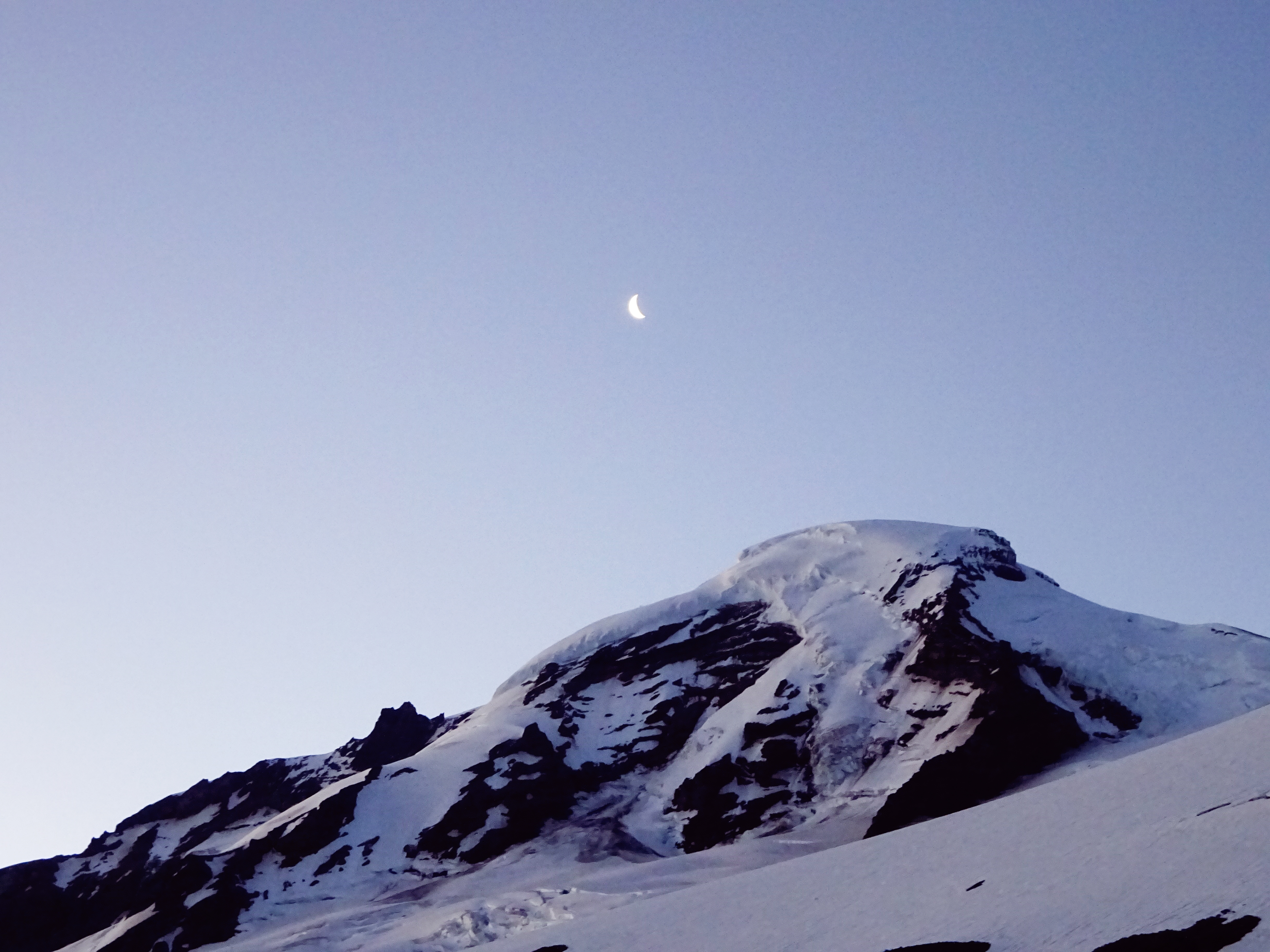
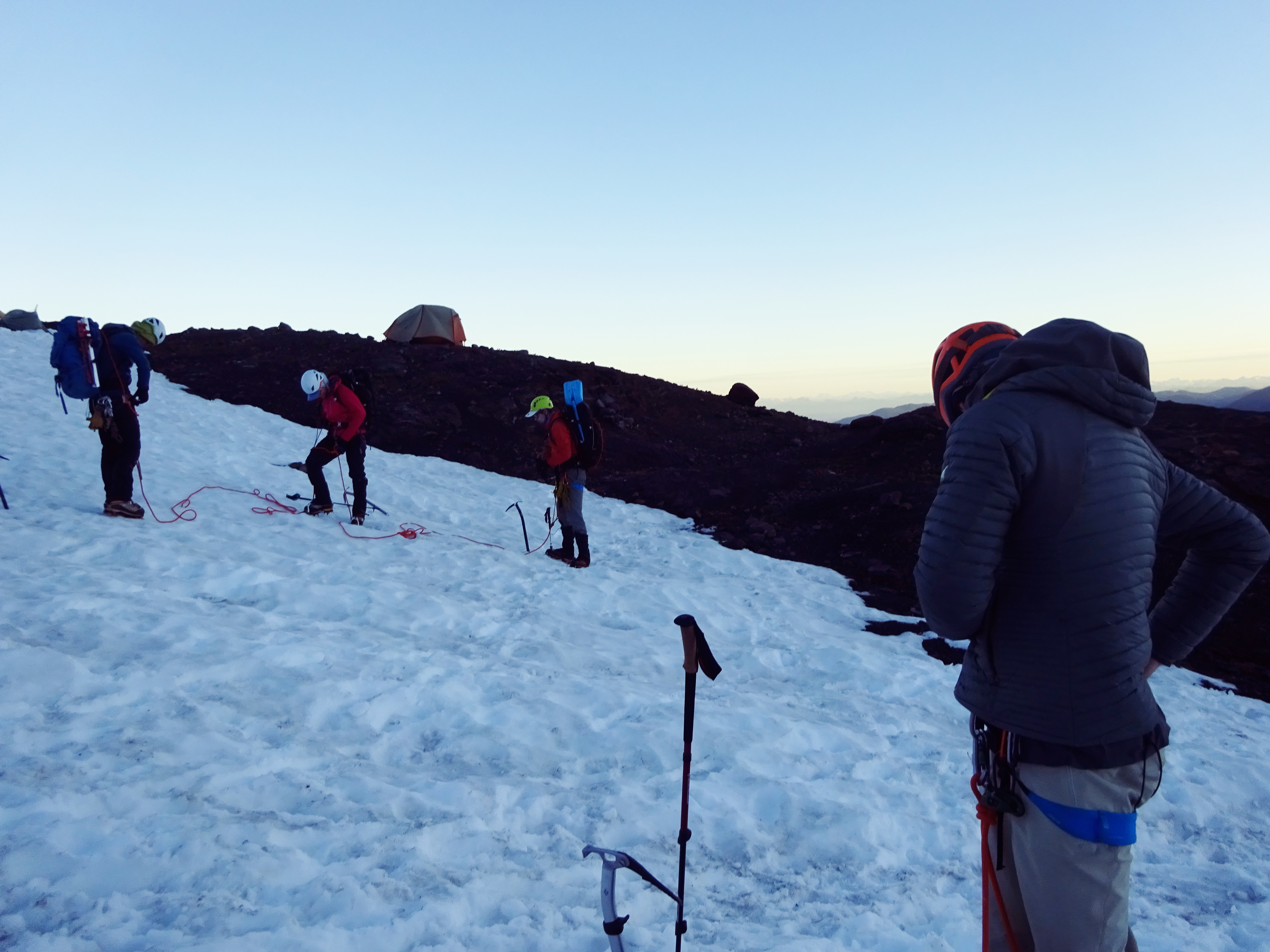
The morning started off with a slow and steady pace, as you are meant to do with long-climbing days. Every hour or so we'd take a quick 10 minute break. And I mean quick, the breaks would pass so quickly as that was the only opportunity to make any adjustments with clothing, eat something, drink water, re-apply sunscreen, and try to fit in sometime to relax and enjoy the view.
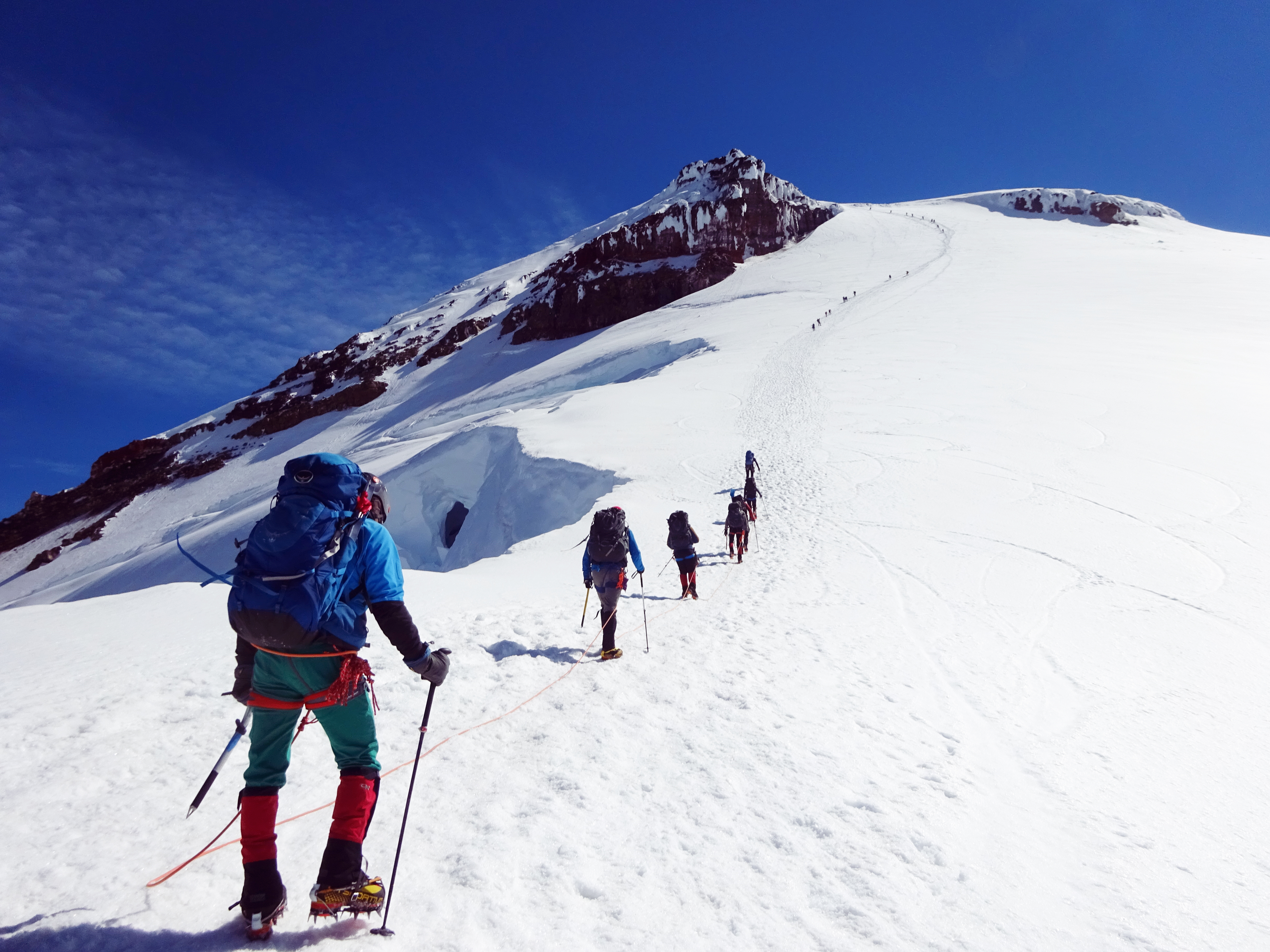
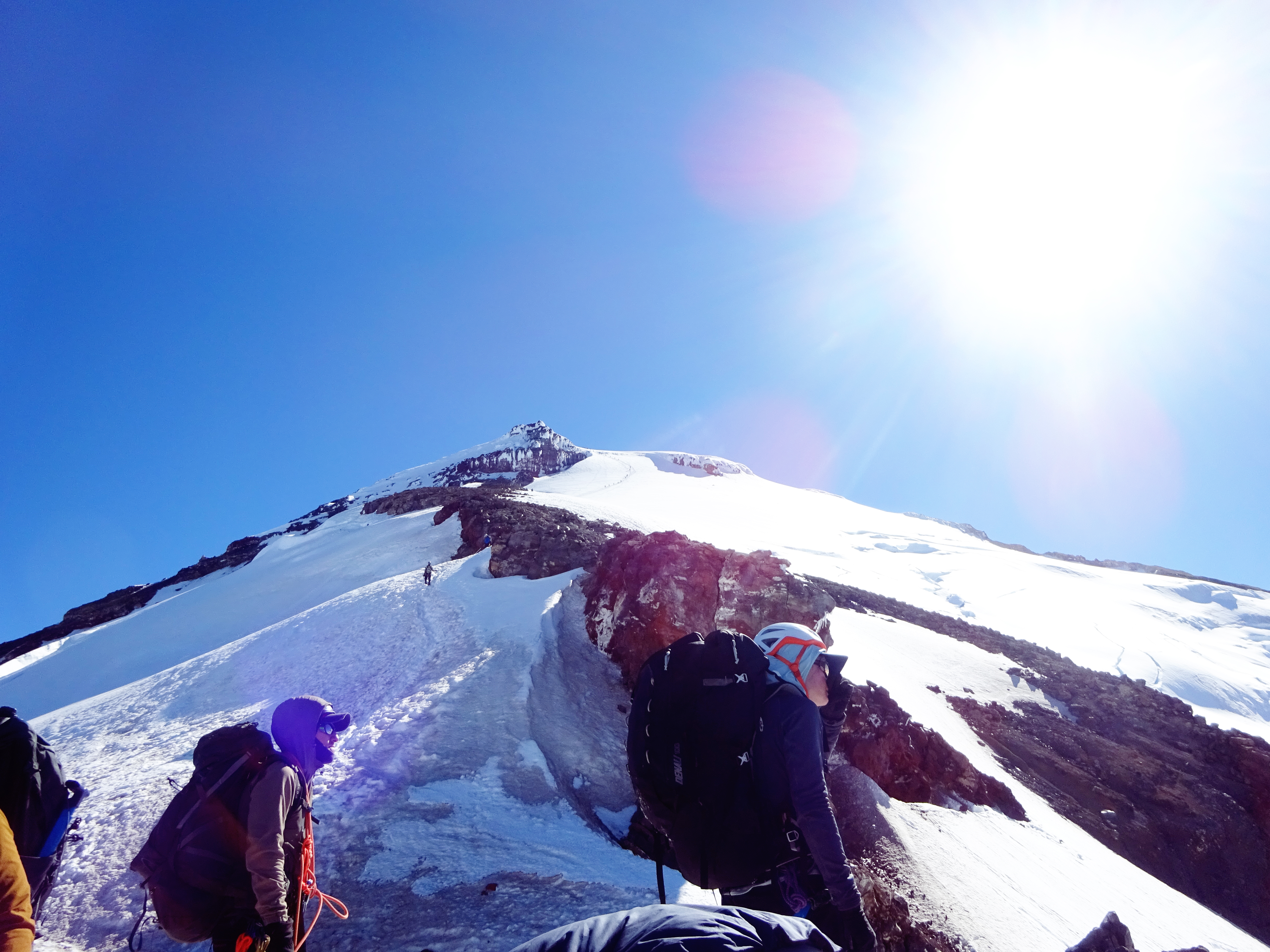
Going up is basically kicking in steps, or finding a steady rhythm while stepping up in established steps. It's also being aware of what you just went though, and what other people in your team are about to go through. Like, if just went over an difficult part, the person after you still has to go through it, so don't speed up. K?
Turns out there's a lot of trust and intuition that's required to be part of a rope team. Being mindful of stepping and pace is so crucial to keep proper spacing between other members (rope should be fully extended but not tight, *the more you know*). Aaaand, sometimes when you get that person who's just off in their own world, it's well, cool. Just cool. Moral: Don't climb with strangers, make mountaineering friends!
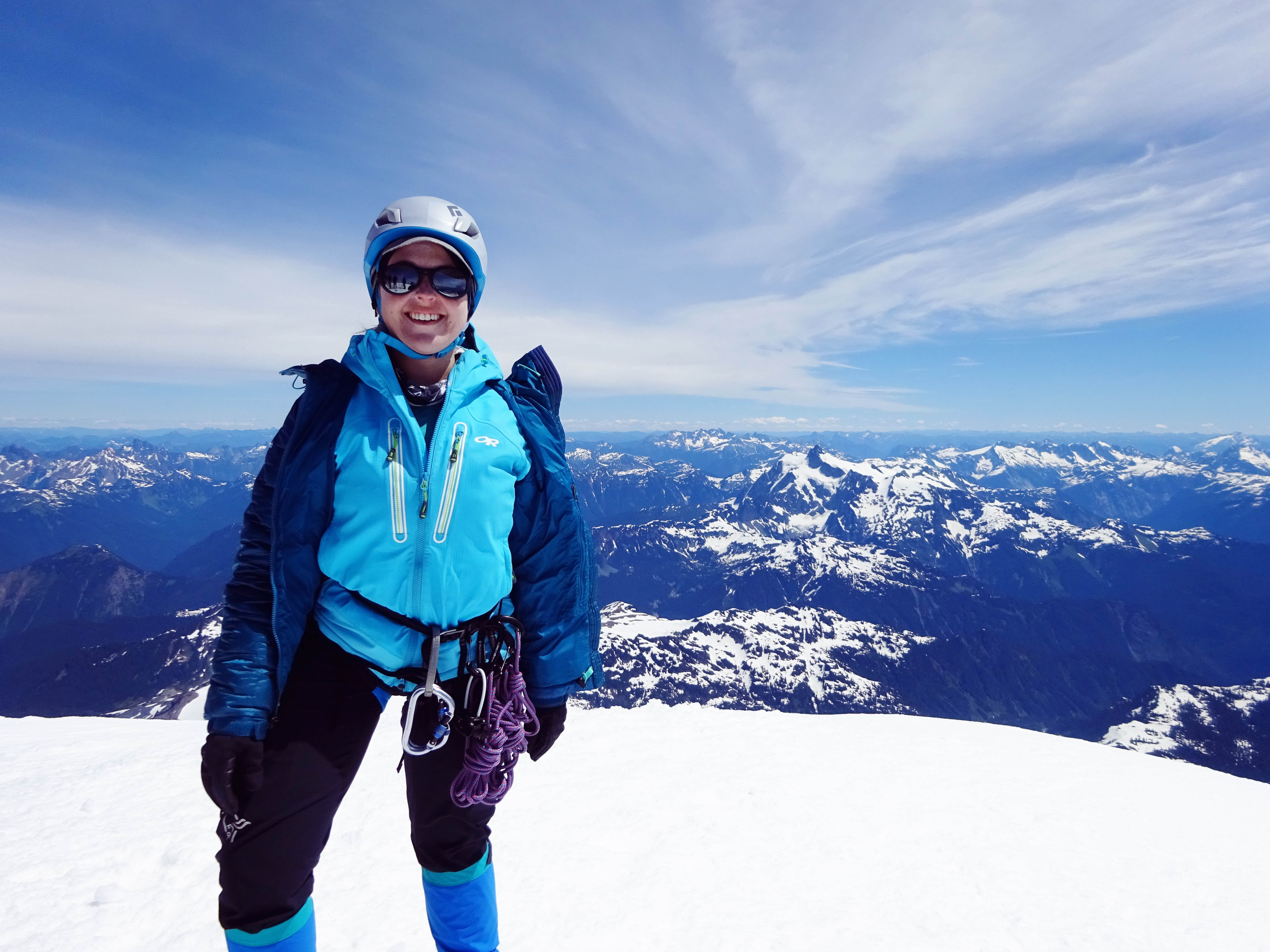
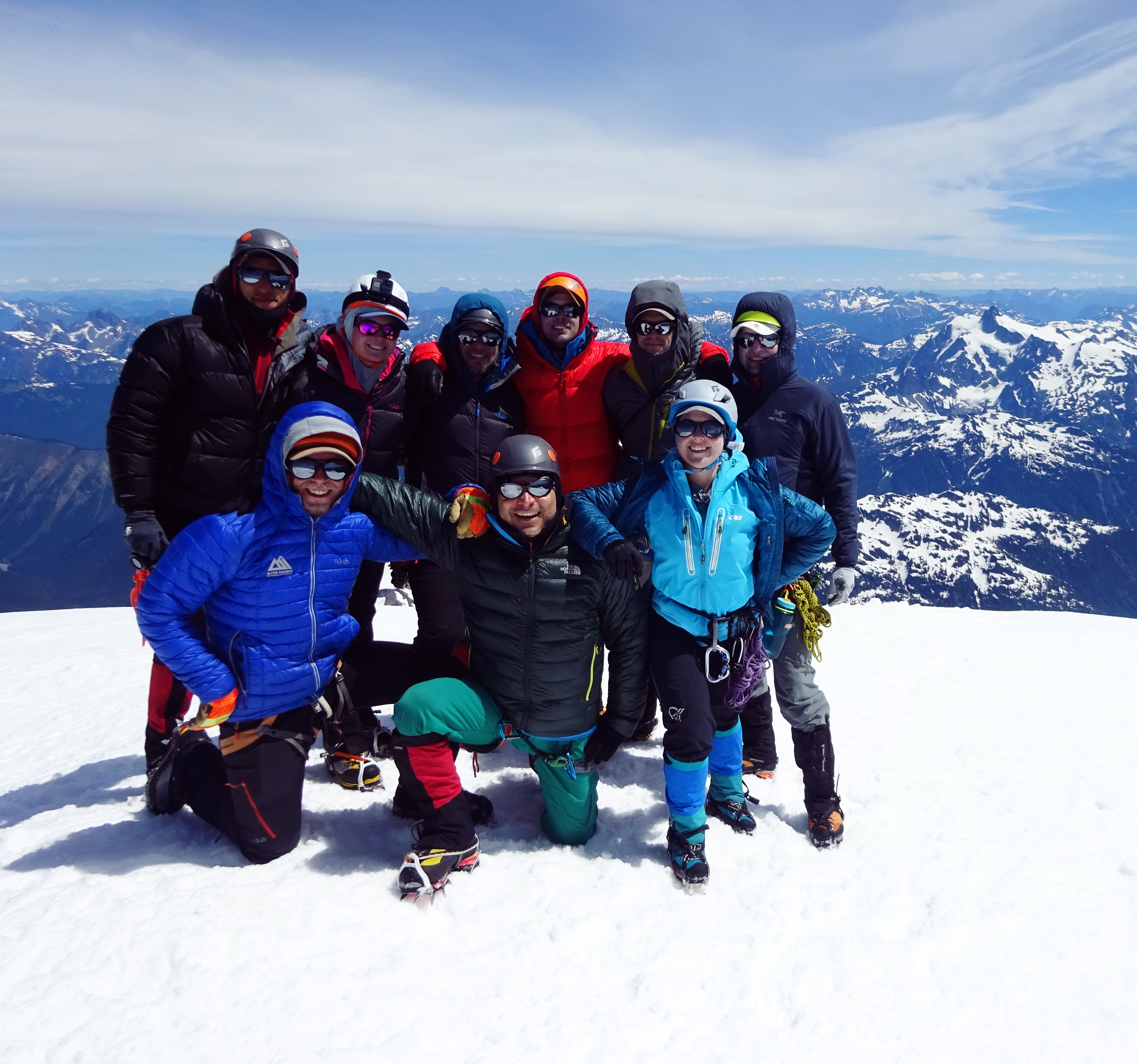
After around 4-5 legs of climbing, we made it to the top! And hooooly smokes was it stunning! We had THE most perfect day, with amazing visibility of all the surrounding mountains (think Rainier, Glacier Peak, Hood, Adams, etc.), the San Juan Island, the sound and really just EVERYTHING (or so if felt like) in the PNW. Five Star. Totally recommend.
The group ran around the top-most part, which was roughly 15-20ft squared (maybe? that's a total guess but seems right? don't @ me, or do if you know the actual surface area), and tried to guess all the most prominent peaks before going into photo-shoot mode. I mean, my homegirl (and only other woman on the trip) was doing full on yoga poses. It was impressive.
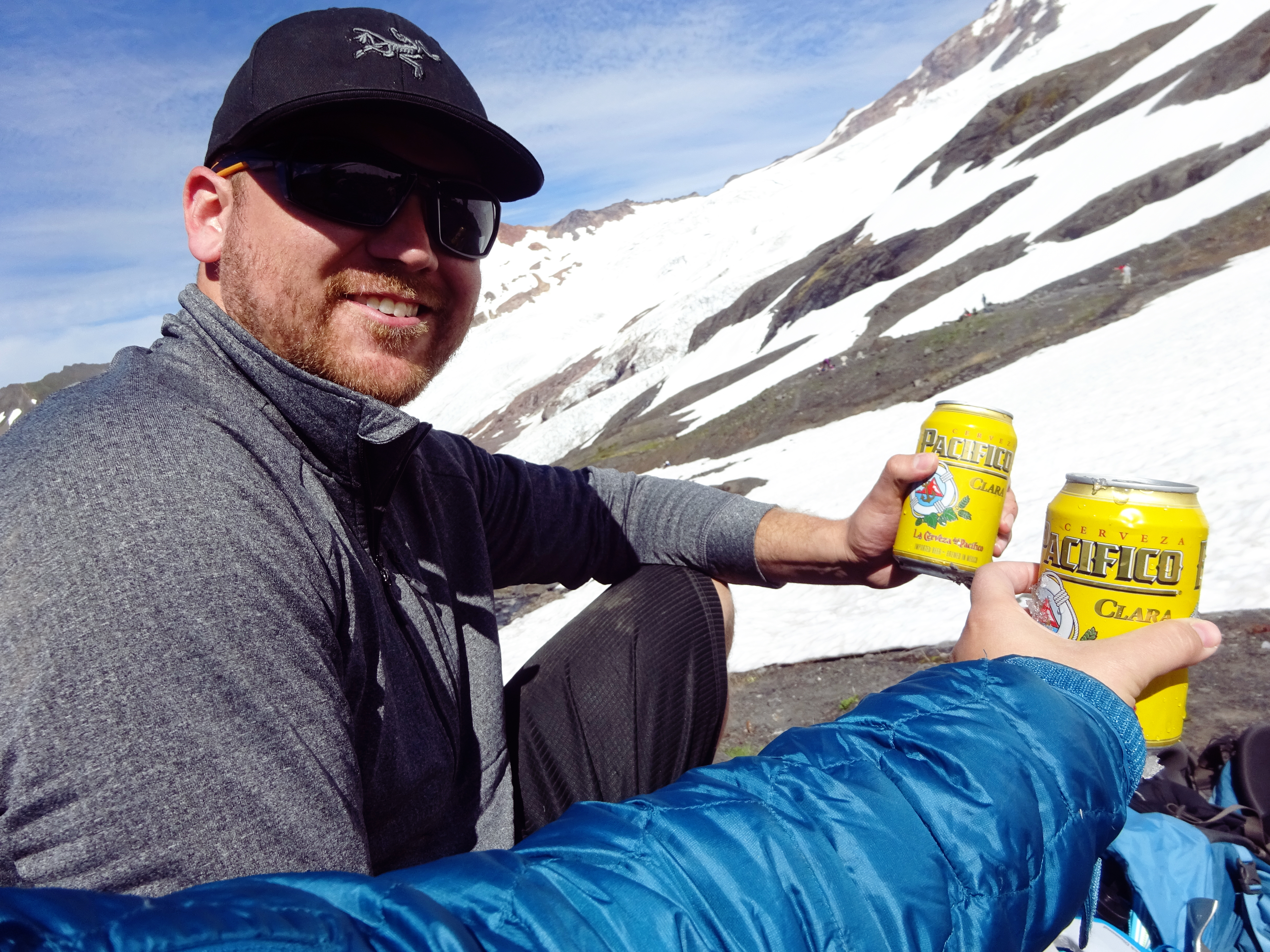
The way back down was the way back down. Back by 3PM, total of a 10hr day. Not bad. Fast forward, Earlier in the course I found out I occasionally got phone service from Canada, so what initially started out as prank texts to the boy turned into suggesting that he drive up to Baker and hike up the trail to our camp and deliver beer after we summit. It was a Sunday, what else did he have to do? So he did it. And now he's a legend.
Day Six: Pack up
We opted to wake up earlier to pack up and hike back down to the trailhead to ensure we had more time to hang out in Seattle. Again, hike down was a hike down. We packed all our gear back into the trailer and headed back into civilization. Cheers to us.
Back in the city I meet up with the only other woman and exchanged griefs of being a female entering this sport while eating the most glorious cookies from Metropolitan Market. Five Star. Highly recommend.
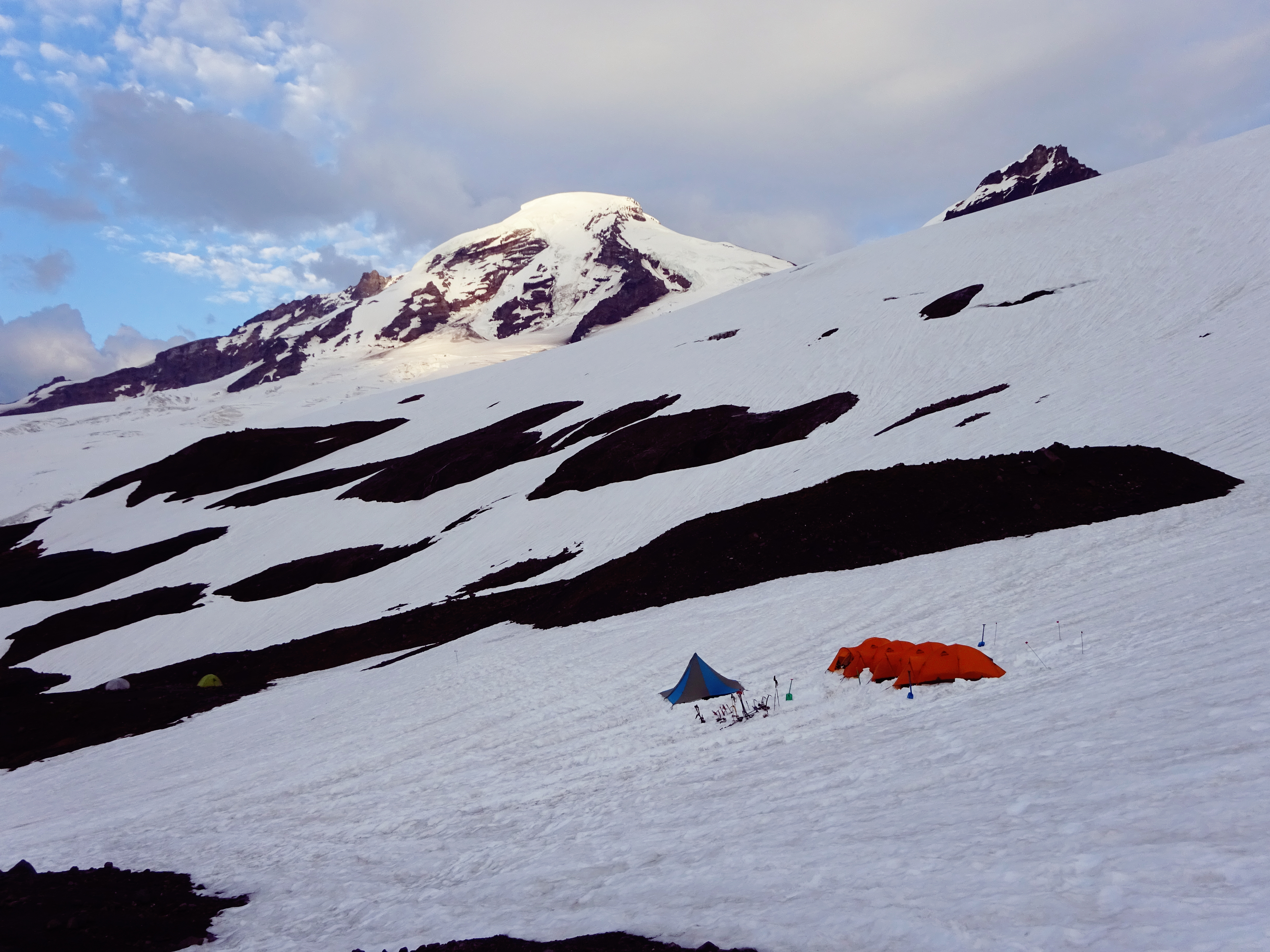
Back IRL
Looking back, it was truly a great experience and I'm SO stoked to climb more. My list of mountains to summit is getting ridiculously long. But my big takeaway, from a guided trip like this, is to get a solid group of my own climbing friends and practice with them. Especially since I'm so fortunate to be surrounded by some of the best mountain ranges!
Doing the guided trip/course was nice, as a way to get into it. But I realized, as I was talking about taking this trip, I'm surrounded by SO many other people who are experience or are interested in mountaineering. I wasn't particularly impressed with the guides of this trip, hence why I haven't mentioned the guide company (they ended up giving me a full refund, but not going to get into that here). Mountaineering is definitely a challenge, but it's full of experiences totally worth having with the right people. But that's like most things in life, eh?
I was so lucky to have another woman on the trip who *totally* got the frustrations I had with this trip. Spoiler alert, we're totally staying in touch and planning all sorts of adventures.
This was a wild ride of an experience, and I can't wait to conquer more mountians!